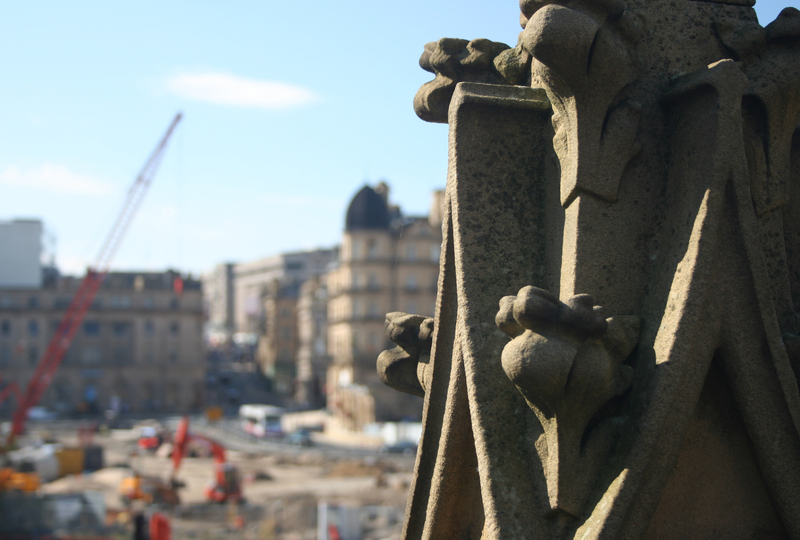Making the Case Against DIY Piano Moving Tasks
Posted on 03/06/2025
Making the Case Against DIY Piano Moving Tasks
When faced with the daunting challenge of piano moving, many homeowners are tempted to take on the task themselves. After all, waving goodbye to hefty moving service bills is appealing. But before you grab a dolly and rally your friends, consider this: moving a piano is one of the most complex and risky DIY moving jobs you could attempt. In this comprehensive guide, we'll examine exactly why tackling a piano move yourself is risky--and why hiring professional piano movers is the best decision for your instrument, your home, and your peace of mind.

Understanding the Complexity of Piano Moving
Pianos are not just large and heavy; they are intricate, sensitive musical instruments. The inner workings of a piano include over 12,000 parts, many of which are extraordinarily delicate. When you're contending with this level of craftsmanship, even the smallest mistake during a move can result in expensive--sometimes irreparable--damage.
Weight and Dimensions of Pianos
- Upright pianos can weigh between 300 and 600 pounds.
- Grand pianos often tip the scale at 700 to 1,200 pounds or more.
- Digital pianos are lighter, but still awkward to transport safely.
- Piano shapes make them tricky to maneuver through doorways, up stairs, and around tight corners.
Attempting a DIY piano moving task without the proper tools or knowledge invites significant headaches and hazards. Let's delve into the top reasons why moving your piano on your own is not recommended.
The Hidden Dangers of DIY Piano Moving
1. High Risk of Physical Injury
Perhaps the most immediate and serious risk is personal injury. Pianos are awkward, heavy, and extremely difficult to manage. Without professional training and equipment, you risk:
- Back injuries from improper lifting.
- Crushed fingers, feet, or limbs if the piano shifts or is dropped.
- Slips, trips, and falls-- especially when navigating stairs or uneven surfaces.
These injuries can range from mild to catastrophic, requiring medical attention and potentially causing long-term health issues. Ask yourself, is saving a bit of money really worth jeopardizing your health?
2. Damage to Your Piano
Pianos are fine-tuned instruments that are extremely sensitive to jostling, tilting, or impact. Common ways a DIY move can damage your piano include:
- Chipped wood, cracked legs, or broken pedals from collisions with walls or furniture.
- Tuning instability caused by rough handling, potentially requiring costly professional tuning afterwards.
- Internal mechanism damage from improper lifting or securing during transport.
- Finish scratches when dragging or bumping the piano across surfaces.
Even if your DIY effort keeps the piano in one piece, it often ends up out of tune or, worse, with internal damage that affects sound and playability forever.
3. Property Damage
Your home is at risk during a DIY move. Moving a massive, unwieldy object like a piano can lead to:
- Scratched hardwoods and dented walls.
- Damaged stair banisters, door frames, and floors.
- Broken tiles and carpet tears.
Repairing these damages can easily cost more than hiring professional piano movers in the first place. Moreover, your standard homeowner's insurance may not cover accidental damages arising from self-moves.
4. Lack of Proper Equipment and Techniques
Pros use specialized equipment designed specifically for safe piano moving. This includes:
- Professional-grade moving dollies
- Piano skids
- Ramps and high-quality straps
- Protective padding and covers
These tools aren't typically available in the average household, and using improper substitutes like regular furniture dollies or old blankets can actually increase the risk of accident or damage.
Expert Techniques: What Makes Piano Moving Professionals Different?
Training and Experience
Professional piano movers undergo extensive training to learn techniques on balance, leverage, and safe maneuvering. They know exactly how to:
- Disassemble parts when necessary (such as piano lids or legs on a grand piano)
- Maneuver tight corners and stairs
- Secure the instrument for safe transport in moving trucks
- Minimize exposure to environmental conditions that can damage delicate wood and metal components
Insurance and Liability Coverage
When you hire seasoned piano movers, you're also buying peace of mind. Reputable movers are insured, and damages--though rare--are covered by their policies. In the unlikely event of an accident, you aren't left facing thousands of dollars in losses.
The True Costs of DIY Piano Moves
Many homeowners opt for DIY piano moving projects as a way to save money. However, this perceived cost-saving rarely reflects the total financial picture. Consider the following overlooked expenses:
- Rental of large trucks or vans with lift gates
- Purchase or rental of specialized moving equipment
- Repair costs for property or piano damage
- Medical bills due to injury
- Potential cost of professional tuning or repairs after the move
The bottom line: The risks and hidden expenses of a DIY piano move often far outstrip the costs of hiring pros from the start.
Additional Factors: Weather, Distance, and Stairs
Is your piano moving task as simple as a straight roll from one flat surface to another? Most likely not. Consider these additional factors that can complicate amateur piano moves:
- Stairs: Navigating stairs with a heavy piano increases the risk to movers, instrument, and property.
- Narrow Hallways: Tight turns and cramped spaces require finesse and coordination beyond most amateurs' skillsets.
- Weather Risks: Rain, humidity, or cold can damage a piano's finish and affect internal materials. Professionals are trained to protect your piano in all conditions.
- Long-Distance Moves: Transporting a piano safely over long distances--including securing it inside a moving truck--is a challenging endeavor best left to experienced professionals.
Case Studies: When DIY Piano Moving Goes Wrong
News stories and insurance claims are rife with cautionary tales involving botched self-move piano attempts. Here are some real-world examples of what can go wrong:
- A family attempting to move an upright piano down a flight of stairs lost control. The piano toppled, damaging the balustrade and front door, and landing in a heap. Their homeowner's insurance didn't cover the repairs, and the piano was beyond recovery.
- During a poorly planned DIY move, a piano shifted on the truck ramp. It rolled off, landing on the driver's foot, resulting in broken bones and a hospital bill far exceeding any professional mover's fee.
- Improper padding during transit led to deep gashes in a baby grand's lacquer finish, requiring costly restoration--nearly half the original value of the piano.
Each of these disasters could have been prevented with the support of qualified piano moving professionals.
The Environmental and Emotional Impact
Pianos as Family Heirlooms
For many, a piano is more than a musical instrument--it's a family treasure with sentimental value. Attempting a risky DIY piano moving job can put more than monetary worth at risk; it jeopardizes memories and legacy. Don't gamble with irreplaceable items.
Stress Reduction
Let's not underestimate the peace of mind that comes with knowing your precious piano is in skilled hands. The stress, arguments, and physical exertion involved in a self-move aren't worth the supposed savings.
Debunking Myths About DIY Piano Moves
Myth #1: "My friends are strong--we can lift it!"
Strength alone isn't the answer. Proper technique and experience matter more; even the strongest helpers lack the knowledge to maneuver safely and efficiently.
Myth #2: "I'll just rent a U-Haul and figure it out."
Most rental trucks lack essential features like lift gates, padded interiors, or anchor points for heavy instruments. Unsecured pianos can topple in transit, leading to devastation.
Myth #3: "It'll save lots of money."
Between equipment rentals, property repairs, and risk of injuries, any up-front savings can vanish--and then some.
Checklist: The Professional Piano Moving Advantage
- Trained and experienced staff handle every aspect of your piano move.
- Specialized equipment ensures protection for both the piano and your property.
- Insurance covers unforeseen damages or accidents.
- Efficient process minimizes time, stress, and risk.
- Proper environmental protections (wraps, covers, climate-controlled trucks) guard against weather hazards.

How to Choose the Right Professional Piano Movers
Not all moving companies are created equal. Here are a few tips to ensure you select qualified piano moving specialists:
- Check for specific piano moving experience. Ask for customer reviews or testimonials.
- Ensure proper insurance and licensing.
- Request a written, detailed quote.
- Ask about equipment and techniques used.
- Confirm their plan for handling stairs or challenging spaces.
Conclusion: Why DIY Piano Moving Isn't Worth the Risk
In summary, attempting DIY piano moving is fraught with challenges, from serious injury risk and irreversible instrument damage to high hidden costs and emotional fallout. The expertise, tools, and peace of mind offered by professional piano movers far outweigh the price difference. If you value your safety, your home, and your precious piano, the smartest move is to leave piano transportation to the experts. Protect your investment and your wellbeing--hire seasoned professionals for your next piano move.
For further reading:
- Piano Technicians Guild - Resources for Piano Owners
- How to Move a Piano Safely
- Classic Move - Piano Movers
Make the right choice for your piano--and let the experts handle the heavy lifting!



